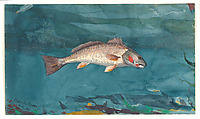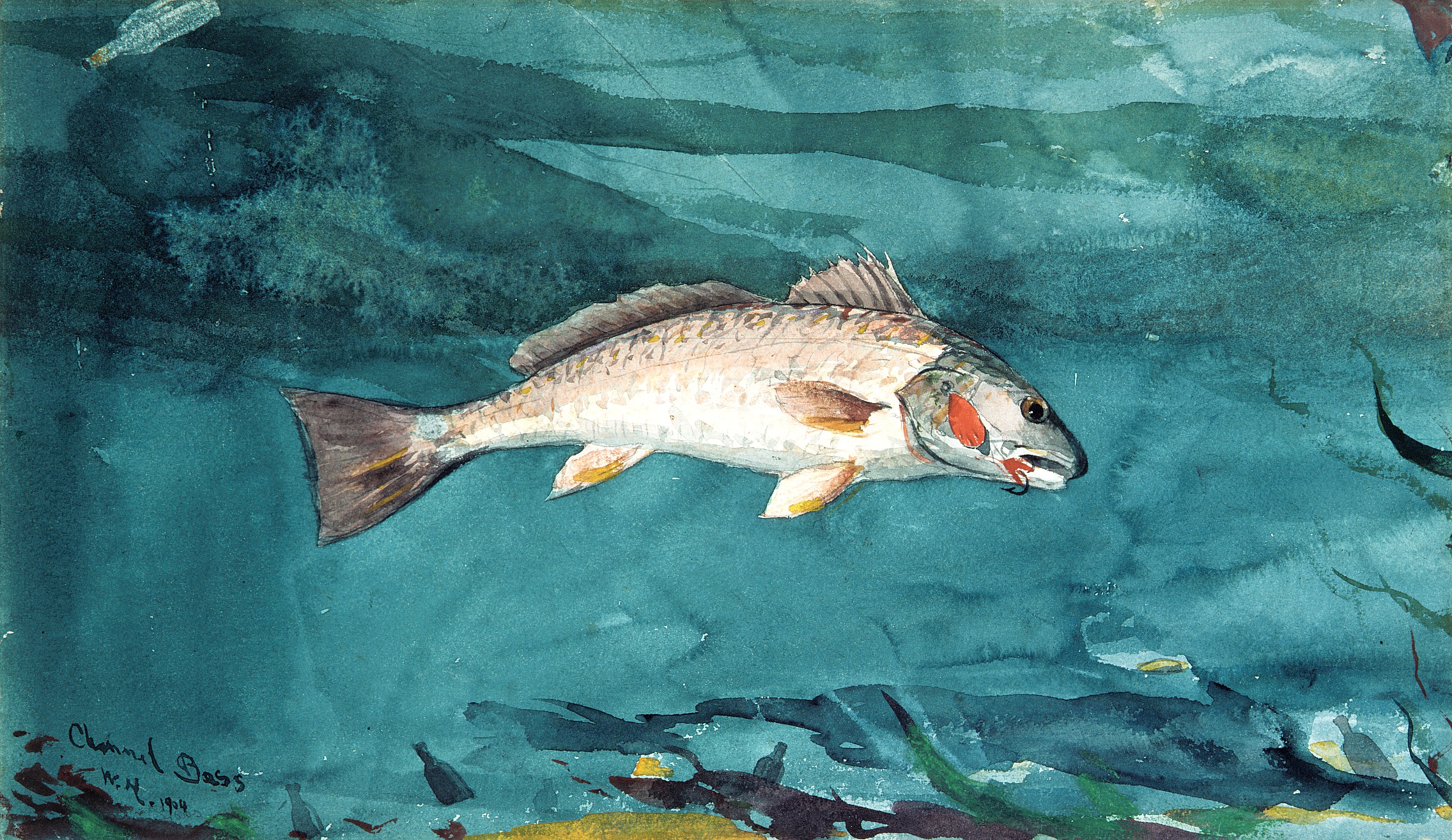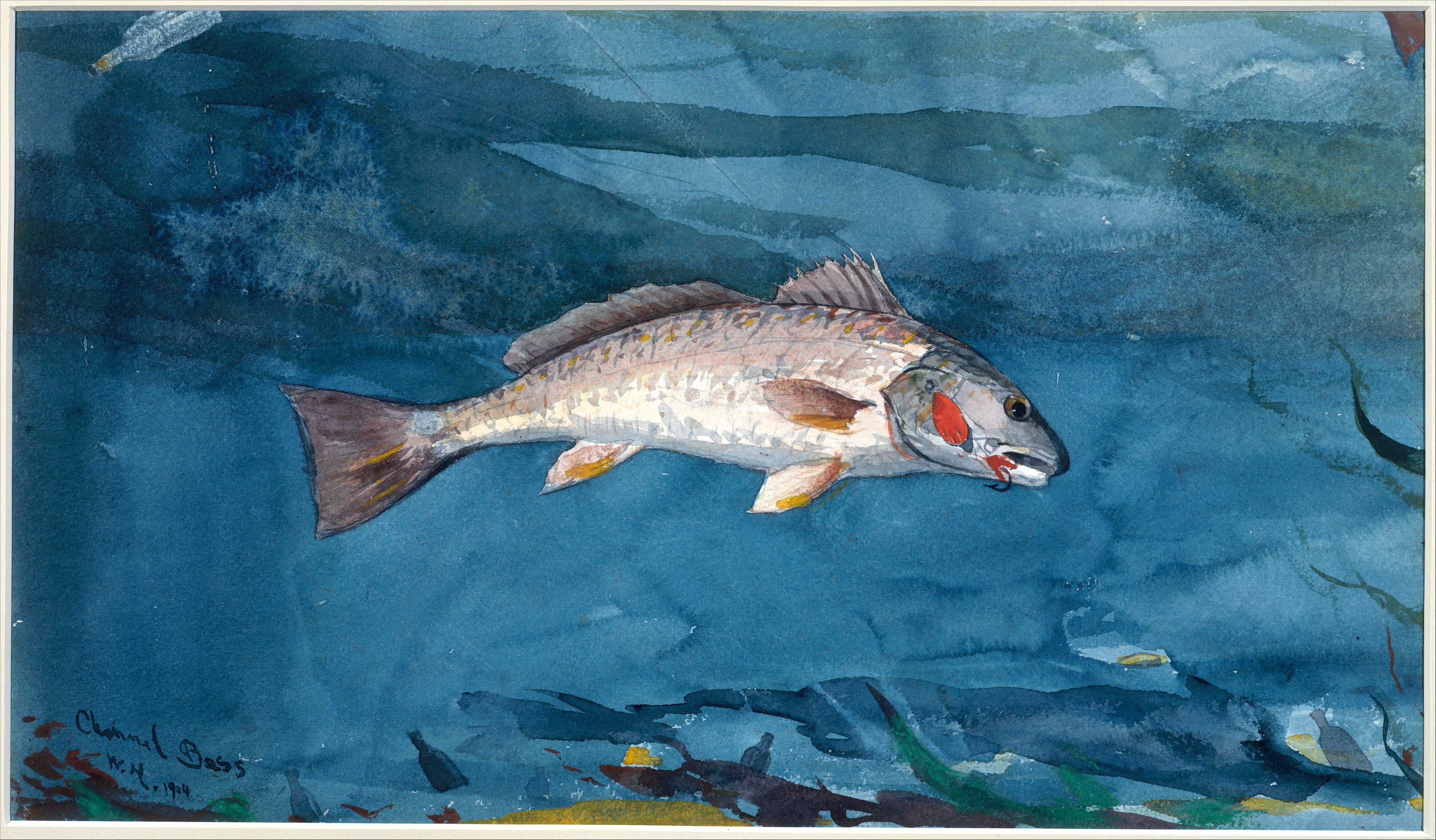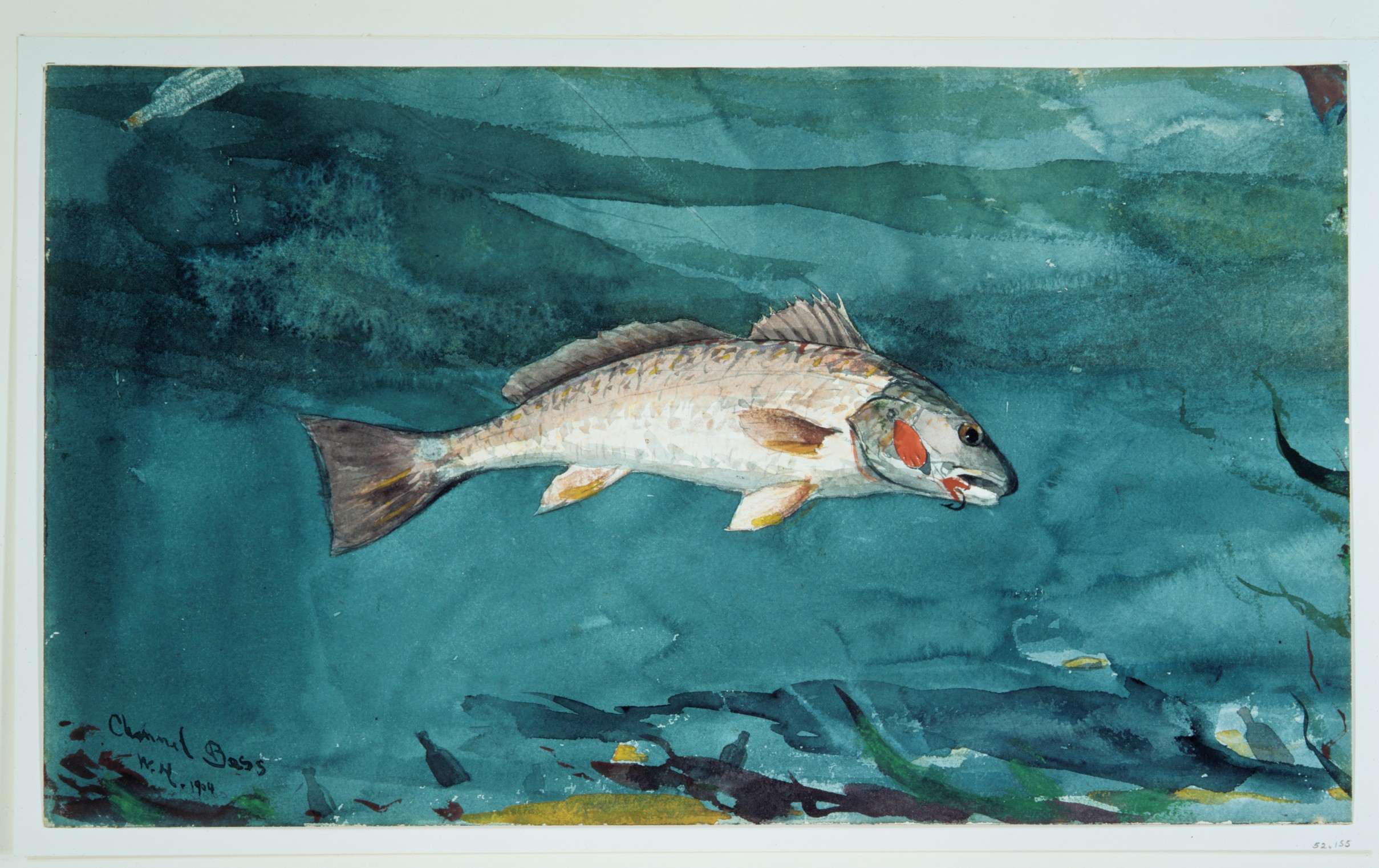Channel Bass
Winslow Homer American
Not on view
In January 1904, Homer arrived in Homosassa, a village on Florida’s Gulf Coast. Declaring the fishing there “the best in America," the artist-outdoorsman also capitalized on the activity’s creative potential, as he had during previous angling expeditions in the Adirondacks and Canada. This watercolor features a channel bass, whose sparkling scales Homer likened to "a $20 gold piece." In a nod to the Homosassa River’s famously clear, shallow water, the artist surrounded the fish with layers of transparent lapis-blue wash. The luminous jewel tones belie harsher realities: the bass appears to have been "foul-hooked" (caught outside the mouth), its connection to the line precarious. Glass bottles in the river amplify the sense of human encroachment on the environment, while also providing an indication of scale.
Due to rights restrictions, this image cannot be enlarged, viewed at full screen, or downloaded.
This artwork is meant to be viewed from right to left. Scroll left to view more.






